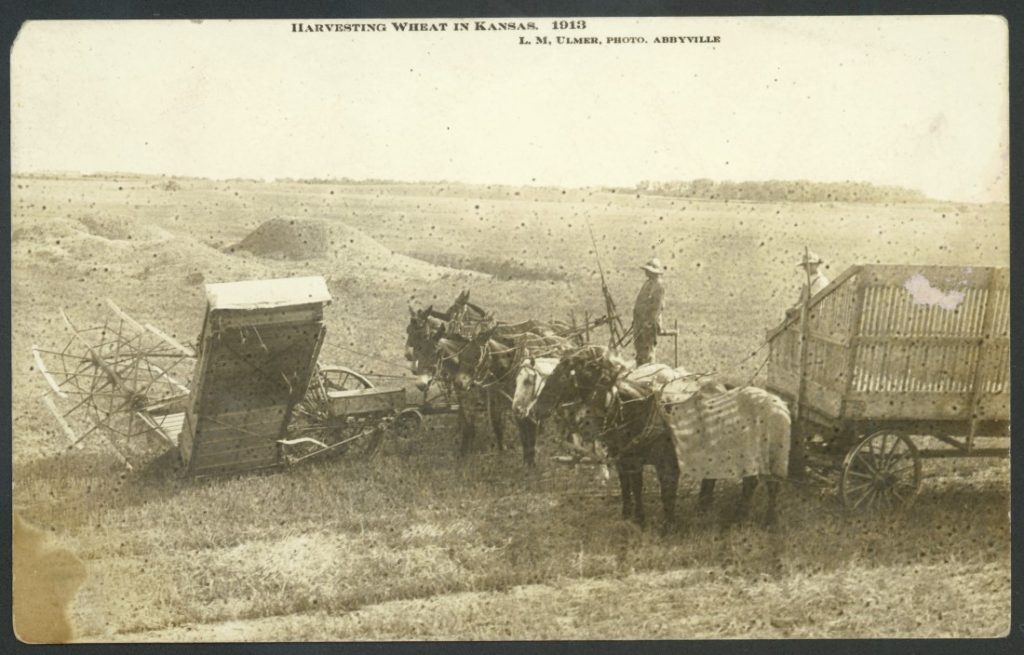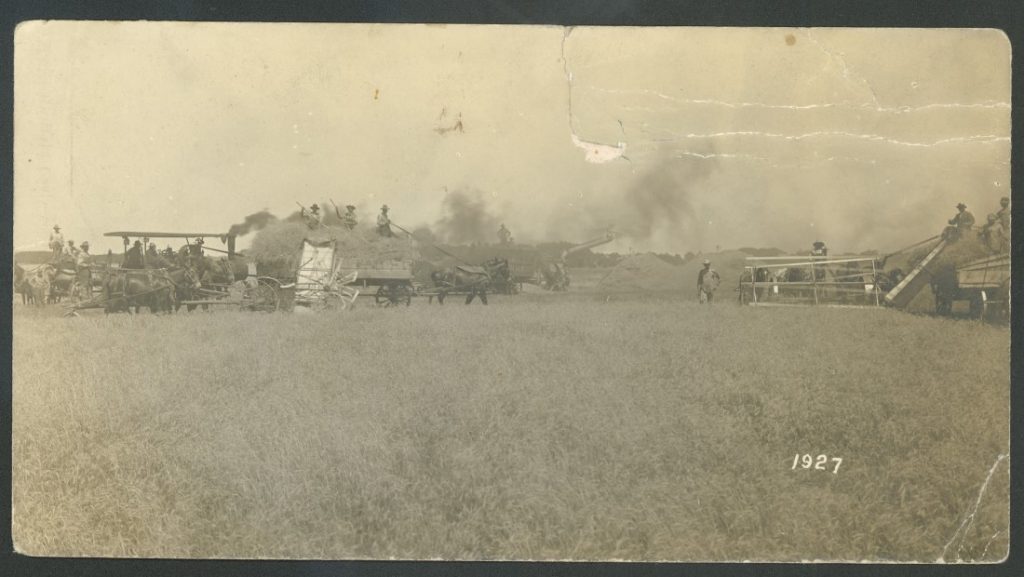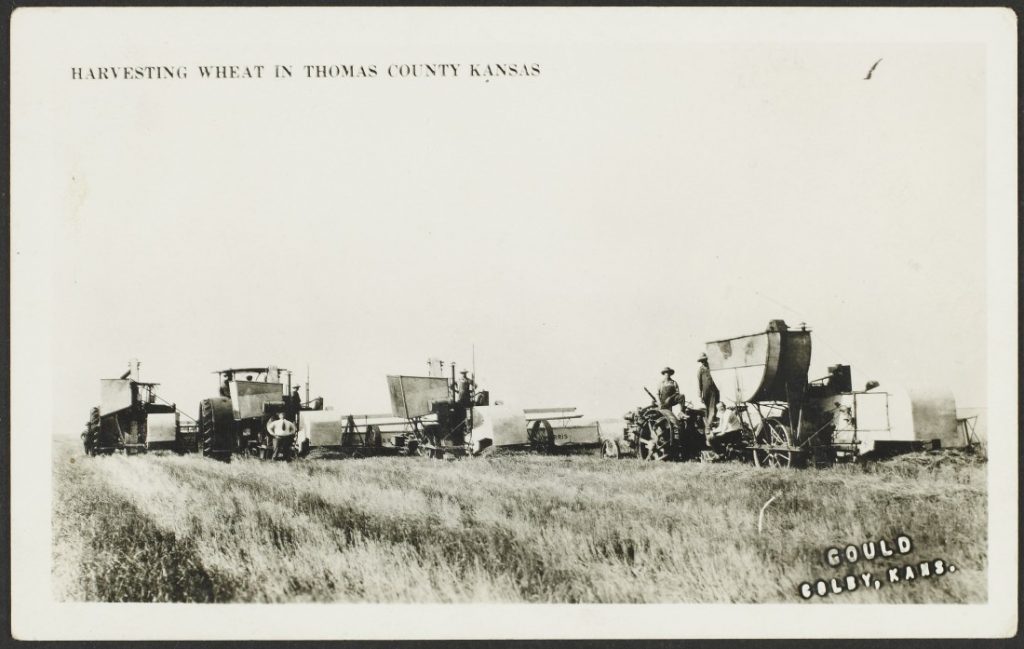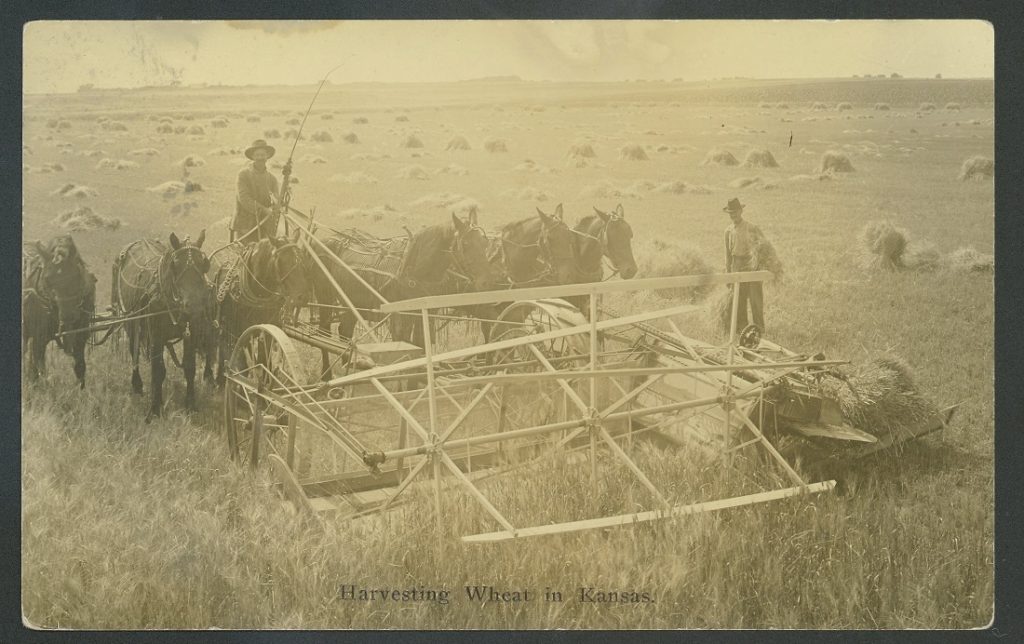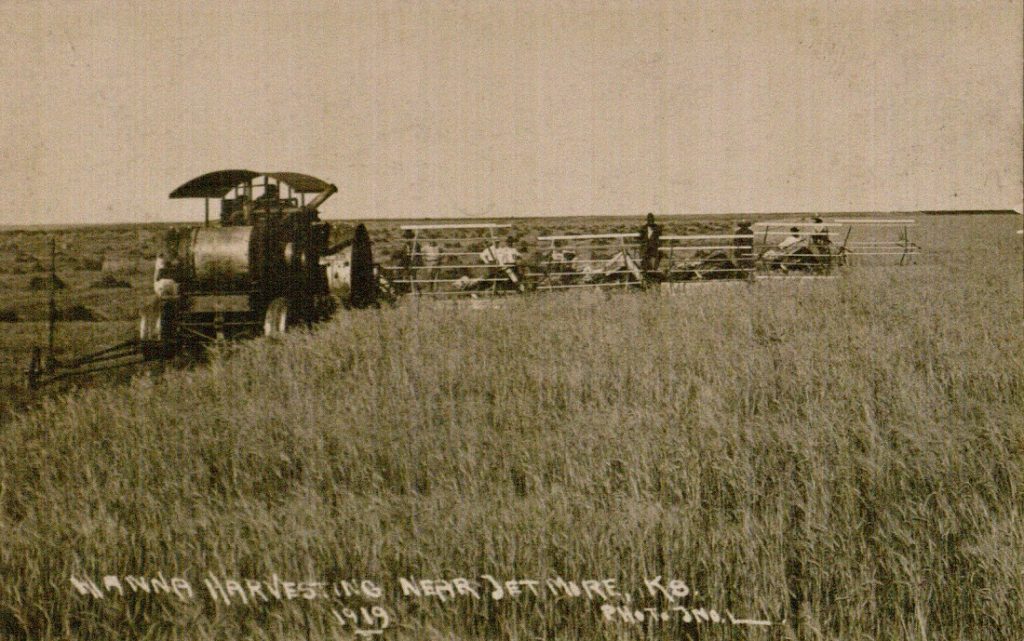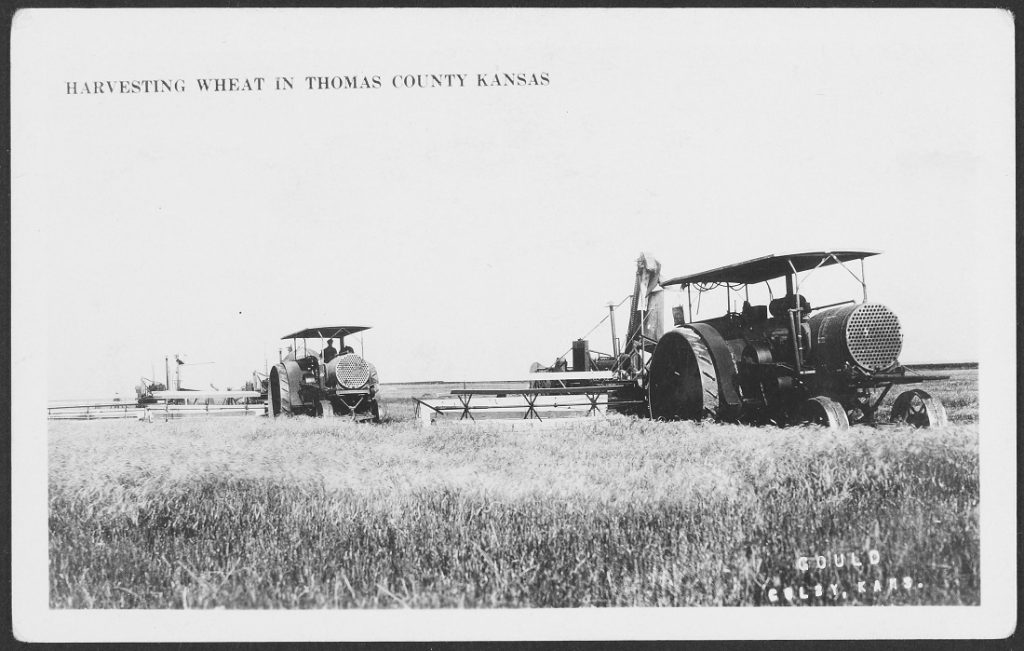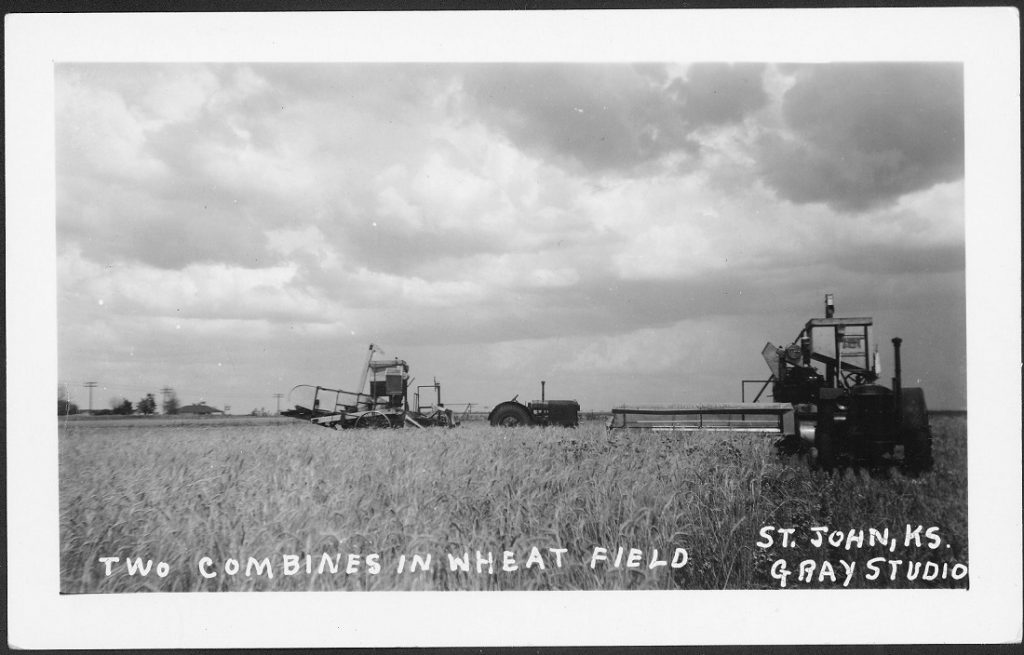Recently, I have been working with Sherry Williams, Curator of Collections and Curator of the Kansas Collection, to survey and treat priority materials from the Kansas Collection. Many of these items had notes in the finding aids about conservation treatment needs.
One particular item was accompanied by a note—dated 1968, the year Spencer Library opened—indicating that the item should not be used until treatment could be secured. The item, which was received in a mailing tube, had been dutifully filed away. We were happy to find it and finally be able to address its needs. Inside was a rolled paper item with a linen backing. It was a plat map of the town of Stranger, KS, surveyed by A.D. Searl and dated June 11, 1867. The item was caked in mud, extremely stained, and very fragile.

Rolled item as it appeared when removed from the tube. Call number RH Map R560. Click image to enlarge.

Detail of the mud along top edge, also showing linen backing below. Call number RH Map R560. Click image to enlarge.
I removed as much dirt and mud as possible with a tool called a microspatula (shown in the above image), lightly dry-cleaned the item with vinyl eraser crumbs to remove additional surface dirt, and removed the linen backing, which peeled right off. The map was placed in a bath to wash away as much of the water-soluble degradation products as possible, then placed in an alkaline bath to add a buffer as the paper ages. Next, it was lined on the back with Japanese paper and wheat starch paste to provide more support to the fragile item. Areas of loss were filled in with toned Japanese paper.


Map of Stranger, KS, before and after treatment. Call number RH Map R560. Click images to enlarge.
Once the treatment was completed and I could safely view the map, I had to learn more about this town with the “strange” name. From the History of Leavenworth County Kansas by Jesse A. Hall and Leroy T. Hand (Topeka: 1921), I discovered that the town was originally named “Journey-Cake” after a nickname given to a Delaware chief who lived nearby. When the town was platted in 1867 (the date of the map), the name was changed to Stranger after the Big Stranger Creek that flowed through the town. However, another nearby town had the same name, so in 1877 the name was again changed to Linwood, in honor of the linden trees in the area.
As you can see from the map, Stranger was situated along both the Big Stranger Creek and the Kansas River. In May and June of 1903, excessive flooding wreaked havoc in the town. On the evening of May 29, 1903, Hall and Hand note, “Many frame houses were swept away in the newly made channel of the Kaw. Some were upturned and were not swept away. Water in places was 20 feet deep over what had been Linwood. The postoffice was completely submerged” (324). The townspeople eventually decided to move their town of Linwood a mile north, where it remains today.

Photo print of flood, possibly 1903. Call number RH PH 1055.2.
Click image to enlarge (redirect to Spencer’s digital collections).
Whitney Baker
Head, Conservation Services
